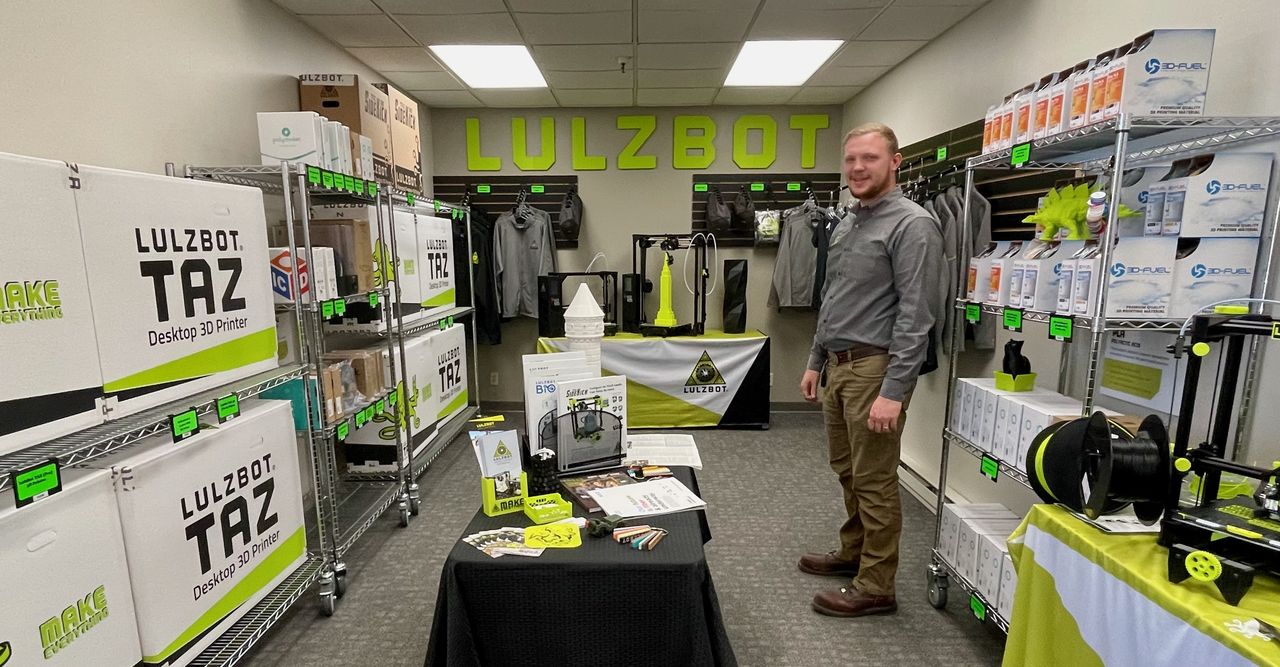
I had an interesting conversation yesterday with the folks behind LulzBot regarding their software updates.
I was contacted by John Olhoft, CEO of FAME 3D, the makers of the LulzBot brand of 3D printers. Olhoft reached out as we had covered the launch of their unusual “long bed” 3D printer days earlier.
During the discussion we talked about the use of software for LulzBot equipment. Like many 3D printer manufacturers, FAME 3D has used UltiMaker Cura as the slicing software for their equipment.
3D printer manufacturers often use third party slicing software for their equipment for a couple of reasons:
- The software is available by open source at no charge
- Operators are often already familiar with using the software
- The open source community or other parties keep the software up to date with advanced features
There are two ways a 3D printer manufacturer could make use of this software. They could simply provide print profiles for their equipment, which is pretty straightforward to do. The other way is to take the open source code for the software and modify it in some way. Manufacturers might choose the latter, a more complex approach, in order to add special features for their equipment that aren’t available on other equipment.
LulzBot equipment has long used the modified software approach, specifically with UltiMaker Cura.
This means that when you buy a LulzBot device, you’re likely going to find a USB stick containing a modified version of UltiMaker Cura. That, or you can download the most current version from the company’s website.
However, there’s been an issue for the last few years: the version of UltiMaker Cura distributed with and for LulzBot equipment has been on a rather old version of UltiMaker Cura. Even recently the LulzBot version was based on UltiMaker Cura version 3.x, whereas the current version is 5.x.
This meant that LulzBot operators had to go without use of the many advanced features that were introduced in version 4 and beyond. That, or make up their own print profiles for the more advanced versions, which I am sure some did.
I wondered what was causing this older software to be released, and got an interesting explanation from Olhoft.
It turns out that the Cura software was inherited by FAME 3D when they purchased the assets of Aleph Objects, the original developers of the LulzBot platform.
Readers may recall that Aleph Objects abruptly laid off workers and basically shut down in 2020. For a time it was feared that was the end of the venerable LulzBot brand, but then some folks led by Olhoft from Fargo, ND, created FAME 3D and scooped up all the assets. In a midnight operation with multiple semi-trailers, they moved the entire operation from Colorado to North Dakota and restarted the LulzBot brand.
Among the assets they acquired was the modified version of UltiMaker Cura that had been built by the previous Aleph Objects staff.
It turns out the software design was quite “deep” into the code, or as Olhoft put it, a “strong fork” of the code. So much so that it was incredibly difficult to migrate to the newer versions of UltiMaker Cura. This was particularly so because FAME 3D wished to continue supporting legacy equipment previously sold under the LulzBot name.
Olhoft explained that their software team spent more than two years reengineering their integration with UltiMaker Cura from scratch so that it is now done in a way that enables easier migration to future releases. Their code is now compatible with a modern Cura engine.
Two weeks ago they released a new LulzBot Cura Edition based on UltiMaker Cura 4.14, the first using their newly developed platform.
Olhoft said they are now working on porting to version 5.6, which is the current version. It seems that they will be entirely up to date very soon.
I always wondered why some modified slicing software tools were sometimes out of date, and this story explains the complexities behind the scene.
Via LulzBot
